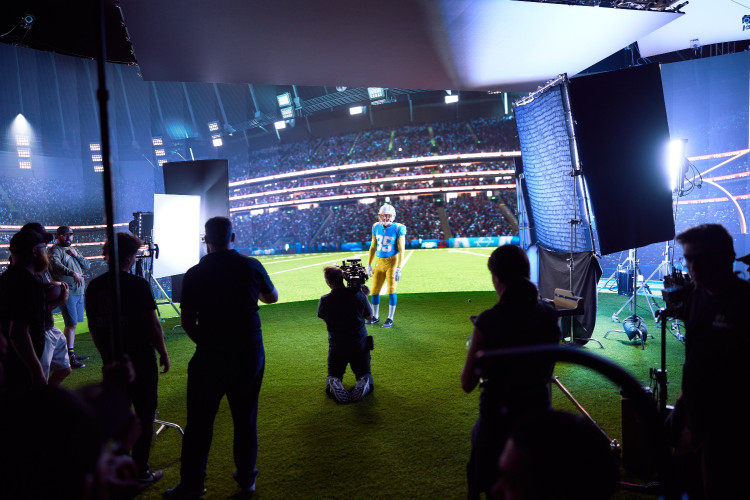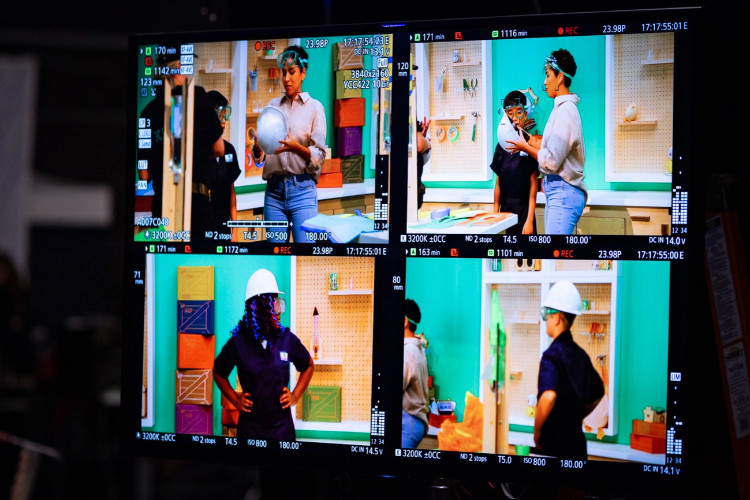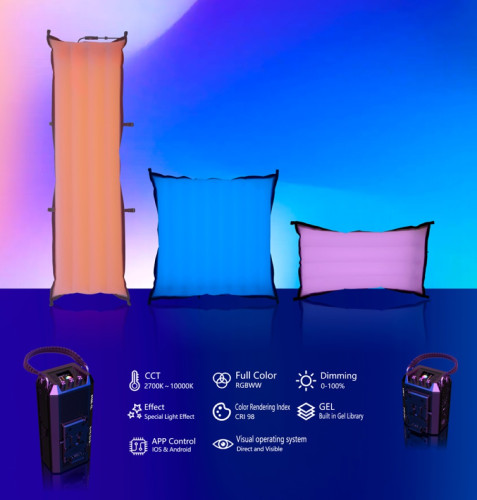IBC 2012 – ‘Dam, that was a good show
Fresh from another trip to Amsterdam, Will Strauss picks his ‘best in show’ camera innovations from IBC.
I know, I know. It’s October and the chances are that you’ve already had your fill of ‘round-ups’, ‘reviews’ and ‘what I saw in Amsterdam’ type articles. But with so much stuff to choose from at the show, hopefully you’ll indulge me as I run through some of the things that caught my eye at IBC 2012.
Well, I particularly enjoyed the stroopwafels and the broodje kroket (having never tried either Dutch delicacy in any of my previous 12 visits to IBC) but I also found plenty of exciting new kit. Which is handy as this article would have been a bit dull if I hadn’t.
With so much to consider (and so little time to consider it) I’ve opted to highlight some of the camera innovations on show, mainly because there were several unique advances in that field but also because 1000 words only gets you so far when there are 11 halls to choose from. So, without further ado, here are my unofficial camera award winners from IBC.
The Viewers Choice Award – Sony PMW-200
Sony’s PMW-200, described by some as an “EX1 on steroids”, is a full HD 50Mb/s 4:2:2 camcorder that records to SxS cards using three -inch ExmorCMOS sensors. Importantly, the codec is the same as shoulder mounted beasts like the PDW-700 or the F800 meaning that it complies with the exacting EBU standards for long-form HD television programmes (which the EX1 did not unless you added an external recorder). As a result, it was probably the most talked about camera at IBC. #Quality.
One For The Future Award – Panasonic HPX600
Touted at NAB but on show at IBC, the Panasonic AJ-HPX600 P2 camcorder is ideal if you’re the kind of camera operator (or camera hire firm) that likes to get value for your purchase. Instead of having to replace your camera every year, why not buy a camera that you can upgrade instead (like you might do with a bit of software). Genius. The HPX600 costs £9,000, supports AVC-Intra 100, DV and DVCPRO out of the box, has wireless metadata input, proxy recording and variable frame rates options and uses a newly developed 2/3-inch CMOS sensor. Yadda yadda yadda. Let’s get to the interesting bit. Here goes: it is "backwards and forwards compatible,\" ie it will allow the user to upgrade his or her camera as new functionality becomes available. Upgrade options will include AVC-ULTRA and microP2 card. #Clever.
Best Sequel – Blackmagic Design Cinema Camera MFT
Assuming you haven’t been living in a cave you’ll have heard that Blackmagic Design have a Cinema Camera in the offing. Well, before that much anticipated device has even hit the streets, the company has announced that a Micro Four Thirds (MFT) model will also be made available. It won’t have lens control but it will work with any manual MFT lens or PL mount lenses (assuming you have an adaptor). It’s a clever move as the 2.5k sensor is pretty much perfectly matched to MFT. Oh, and to avoid any confusion, the original Cinema Camera is being renamed as the Cinema Camera EF while the new model will be called the Cinema Camera MFT. So now you know. #Smart
Most Promising Newcomer – Canon C100
OK, so the title is a bit of a misnomer but as an “entry-level” version of the popular C300, Canon’s C100 does offer a lot of potential. Setting you back just £5k (ish), it’s a serious competitor to Sony’s FS100 (which is roughly the same price). It has the same pistol side grip, viewfinder and LCD screen as the C300 but with a Super 35mm CMOS Sensor that runs at 24, 25, 30, 50i and 60i frames per second at 1920 x 1080 resolution. Like the FS100 it uses H.264 in an AVCHD wrapper but unlike the FS100 it has built-in glass ND filters, which is a bonus. #Progress
Best Use of Light - Kino Flo Celeb 200
Kino Flo’s Celeb 200 is the company’s first non-fluorescent professional soft lamp. The variable colour LED fixture is fully dimmable and offers a similar output and size to a Diva 400. Rugged and lightweight (aren’t they all?) the Celeb 200 works with all available power sources around the world but its most interesting feature is the addressable colour temperatures. You can dial in or select from 2700 to 5500 Kelvin. At £2000 plus it’s not cheap but I expect this to be a popular lamp. #Hot
Best Adaptation –
Thanks to a little innovation announced at IBC, television producers can now bring the artistic majesty of the hugely popular Arri Alexa to a multi-camera studio shoot or live OB. The announced Fibre Remote Option might not sound sexy but it moves the Alexa into a whole new realm. To function in a live, multi-camera environment requires the Fibre Remote plus a camera monitor and a Copperhead system from Telecast Fiber Systems (including camera unit, base station, power adapter and remote control panel). Once you put all that together you can modify the camera’s internal signal processing live, allowing direct control of iris, white balance, black level, gamma, black gamma, knee, gain, detail and shutter. #Universal
Best Performance in a Supporting Role – Sony PMW-50
Decks aren’t as sexy as lenses or cameras. And since the move to file-based production you’d possibly expect them to become obsolete. Not so. Sony’s PMW-50 field deck is a compact player/recorder with a flip up screen, two SxS slots and both HD-SDI and HDMI in and out points plus USB and Firewire. Why is it interesting? It should allow users of the Canon C300, Sony F3 or any other HD-SDI cameras for that matter to record straight to HD broadcast standard XDCAM 4:2:2 at 50Mb/s. #Versatile
There are, of course, countless other innovations I could’ve mentioned and apologies to anyone who has invented something fantastic that wasn’t included. I’m just one man and IBC is a whole lot of hall. Until next year…




































